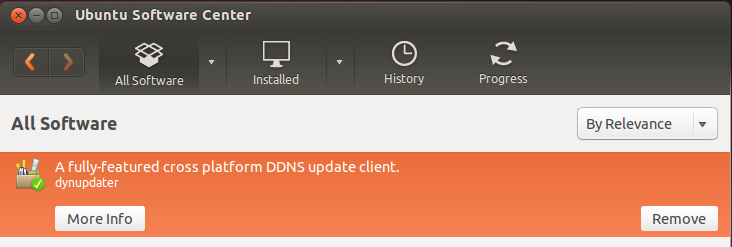

#Dyn updater client update
Registrars today offer end-user updating to their account information, typically using a web-based form, and the registrar then pushes out update information to other DNS servers.ĭue to the distributed nature of the domain name systems and its registrars, updates to the global DNS may take hours to distribute. As the system grew this task became difficult for any one site to handle, and a new management structure was introduced to spread out the updates among many domain name registrars. When DNS was first introduced, the database was small and could be easily maintained by hand. Today, numerous providers, called Dynamic DNS service providers, offer such technology and services on the Internet.ĭNS is based on a distributed database that takes some time to update globally. This, however, broke the end-to-end principle of Internet architecture and methods were required to allow private networks, with frequently changing external IP addresses, to discover their public address and insert it into the Domain Name System in order to participate in Internet communications properly. The private network behind these routers uses address space set aside for these purposes (RFC 1918), masqueraded by the NAT device. DHCP became an important tool for ISPs as well to manage their address spaces for connecting home and small-business end-users with a single IP address each by implementing network address translation (NAT) at the customer-premises router. The explosive growth and proliferation of the Internet into homes brought a growing shortage of available IP addresses. This protocol-based DNS update method was documented and standardized in IETF publication RFC 2136 in 1997 and has become a standard part of the DNS protocol (see also nsupdate program). The first implementations of dynamic DNS fulfilled this purpose: Host computers gained the feature to notify their respective DNS server of the address they had received from a DHCP server or through self-configuration. This feature required that DNS servers be kept current automatically as well. In addition, this helped conserve the address space available, since not all devices might be actively used at all times and addresses could be assigned as needed. The Dynamic Host Configuration Protocol (DHCP) allowed enterprises and Internet service providers (ISPs) to assign addresses to computers automatically as they powered up. However, the rapid growth of the Internet and the proliferation of personal computers in the workplace and in homes created the substantial burden for administrators of keeping track of assigned IP addresses and managing their address space.

IP addresses, once assigned to a particular host, rarely changed and the mechanism was initially sufficient. Even this DNS facility still used static lookup tables at each participating node. The Domain Name System brought a method of distributing the same address information automatically online through recursive queries to remote databases configured for each network, or domain. The tables were maintained manually in form of the host file. In the initial stages of the Internet (ARPANET), addressing of hosts on the network was achieved by static translation tables that mapped hostnames to IP addresses. 2.2.2 DDNS for security appliance manufacturers.These clients provide a persistent addressing method for devices that change their location, configuration or IP address frequently. The second kind of dynamic DNS permits lightweight and immediate updates often using an update client, which do not use the RFC2136 standard for updating DNS records. These mechanisms are explained in RFC 2136, and use the TSIG mechanism to provide security.
#Dyn updater client manual
The first is "dynamic DNS updating" which refers to systems that are used to update traditional DNS records without manual editing. The term is used to describe two different concepts. JSTOR ( December 2016) ( Learn how and when to remove this template message)ĭynamic DNS ( DDNS) is a method of automatically updating a name server in the Domain Name System (DNS), often in real time, with the active DDNS configuration of its configured hostnames, addresses or other information.Unsourced material may be challenged and removed. Please help improve this article by adding citations to reliable sources.


 0 kommentar(er)
0 kommentar(er)
